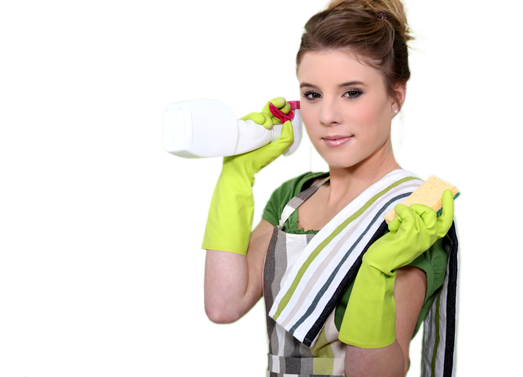Crafting a Pristine Vehicle: Professional Cleaning Techniques
Posted on 28/09/2025
Introduction to Crafting a Pristine Vehicle
In today's fast-paced world, maintaining a pristine vehicle is a reflection of both your personal style and your commitment to vehicle longevity. Beyond first impressions, a clean car also safeguards its market value and ensures a healthy environment for occupants. But what defines a truly spotless car? Professional cleaning techniques elevate your vehicle from mere cleanliness to perfection, delivering a showroom shine and an inviting interior. In this comprehensive guide, we unravel the secrets of expert car detailing and provide actionable advice for crafting a pristine vehicle.

The Importance of Professional Cleaning Techniques for Vehicles
- Enhanced Aesthetic Appeal: A thorough clean transforms any car, making it eye-catching and well-kept.
- Prolonged Longevity: Removing dirt, grime, and contaminants protects your paint, undercarriage, and mechanical parts from wear.
- Healthier Environment: Professional cleaning eliminates allergens, bacteria, and odors from your vehicle's interior.
- Increased Resale Value: Buyers are drawn to cars that have clearly been well-maintained inside and out.
- Personal Satisfaction: Driving a spotless vehicle simply feels better!
Essential Tools and Products for Professional Car Cleaning
Before you embark on vehicle detailing, you'll need specific tools and products. Here's a basic arsenal:
- Microfiber towels
- Soft-bristle brushes (for interiors and wheels)
- Dual-bucket system (one for washing, one for rinsing)
- High-quality car shampoo
- Wheel cleaner
- Clay bar kit
- Safe all-purpose cleaner
- Vacuum cleaner with attachments
- Upholstery and leather cleaners
- Glass cleaner (ammonia-free)
- Polish, wax or ceramic coatings
Each of these items plays a vital role in executing professional cleaning techniques for your vehicle.
Exterior Cleaning: Achieving a Spotless Finish
1. Pre-Wash and Rinse
Start by giving your car a thorough rinse with plain water. This initial step softens and removes loose dirt, preventing potential scratches during contact washing. Use a pressure washer or high-flow hose for an improved effect.
2. The Two-Bucket Method
A fundamental technique in professional car care is the two-bucket method. One bucket holds your soapy wash solution, and the other contains clean rinse water. After each pass on the car's surface, rinse your sponge or mitt in the clean water bucket before dunking it back in the soap bucket. This reduces the risk of dragging dirt onto your vehicle and causing micro-scratches.
3. Proper Washing Techniques
- Work from top to bottom. Start at the roof and work downwards--gravity ensures contaminants cascade down, so don't reintroduce dirt to cleaned surfaces.
- Use gentle motions. Let the cleaning tools do the work; excessive pressure grinds in dirt.
- Detail around trim and emblems with soft brushes to dislodge hidden grime.
4. Decontamination: Clay Bar Magic
To craft a spotless vehicle exterior, use a clay bar after washing. This process removes stubborn contaminants such as tar, tree sap, and industrial fallout--leaving your paint silky smooth and ready for polishing. Lubricate generously to prevent marring.
5. Drying Without Damage
Skip household towels! Use a plush microfiber drying towel to absorb water without scratching. Pat surfaces rather than dragging the towel for ultimate paint protection.
6. Polishing and Waxing: The Professional Touch
- Polishing: Removes light scratches and swirl marks, reviving paint clarity. Use a dual-action polisher for best results. Always follow manufacturer recommendations for your paint type.
- Waxing or Ceramic Coating: Seals your hard work, adding gloss and creating a hydrophobic barrier. High-quality waxes or modern ceramic coatings last longer and offer greater protection.
7. Wheel and Tire Cleaning
Wheels collect brake dust, road salt, and grime. Use a dedicated wheel cleaner and soft-bristle wheel brush. Don't forget to dress your tires--with specialized tire gel--for that ultimate showroom finish.
Interior Cleaning: Crafting a Pristine Cabin
1. Remove Trash and Personal Items
Eliminate clutter--empty the glove compartment, cup holders, under seats, and door pockets. This clears the way for a deep interior clean.
2. Vacuuming Techniques
- Use a crevice tool to access tight spots around seats and consoles.
- Brush vacuum attachments work well for seats and carpet fibers.
- Move seats forward and back to cover hidden areas under railings, ensuring a pristine vehicle interior.
3. Upholstery and Carpet Cleaning
Stains and spills are inevitable. Use specialized upholstery cleaners or carpet cleaners on stubborn spots. For extensive issues, consider a portable carpet extractor--a staple in professional shops. Treat spots with the appropriate cleaner, let soak, agitate gently, and blot with a microfiber towel.
4. Leather Care
Leather seats add luxury but require the right care. Wipe with a damp microfiber, then apply a pH-balanced leather cleaner. Allow time to dry, then finish with a conditioning cream--this prevents cracking and preserves suppleness.
5. Dashboard, Vents, and Trim
Use a soft brush and microfiber cloth to sweep away dust from air vents, controls, and seams. For a deeper clean, apply an interior-safe all-purpose cleaner. Remember to use a satin-finish protectant to guard against sun fading.
6. Clean Windows and Mirrors
Use an ammonia-free glass cleaner to avoid streaks or damaging window tint. Wipe in two directions (vertical and horizontal) to spot missed areas. Crystal-clear glass ensures optimal driving visibility, finishing your professional interior cleaning.
Detailing the Details: Often Overlooked Spots
- Seat tracks and hardware
- Under and behind seats
- Door jambs and sills
- Trunk and spare tire area
- Pedals and footwells
- Seat belts (wipe with a mild cleaner)
Paying attention to these areas is what truly sets professional car cleaning apart from an average wash. It's these finishing touches that create a consistent, spotless appearance--and leave your vehicle feeling newly minted.
Odor Elimination: Keeping the Cabin Fresh
A truly pristine vehicle is as pleasant to smell as it is to see. Bad odors can linger from food, pets, mold, or musty HVAC systems. Beat them with these expert tips:
- Vacuum and clean all soft surfaces to remove embedded smells.
- Use an enzymatic cleaner for organic stains (like milk or vomit).
- Steam clean carpets and seats for deep disinfection.
- Replace cabin air filters and run the HVAC system with a dedicated AC deodorizer.
- Charcoal bags or ozone treatments are effective for persistent smells, but be aware: ozone should be used only by professionals.
Pro Tips for Maintaining a Pristine Vehicle
- Wash regularly--ideally every one to two weeks, especially during winter or pollen seasons.
- Park in the shade or under cover to avoid sun and environmental damage.
- Use car covers if parking outside long-term.
- Detail the interior at least monthly to prevent buildup of dust and debris.
- Address spills or stains immediately for easy removal.
- Keep a mini cleaning kit (wipes, microfiber, mini vacuum) for on-the-go fixes.
Common Mistakes to Avoid in Vehicle Cleaning
Even with the best intentions, missteps can compromise your vehicle's shine or harm its surfaces:
- Skipping pre-rinse: This can scratch paint during contact washing.
- Using household detergents: They strip wax and can dull finishes.
- Overusing harsh chemicals: Damages plastic, rubber, or sensitive interiors.
- Air drying in direct sunlight: Causes water spots and mineral deposits.
- Forgetting underbody washing: Road salt can corrode critical components.
- Neglecting scheduled maintenance: Cleaning is no substitute for regular servicing or checks of air conditioning and filters.
Eco-Friendly Approaches to Car Detailing
For the environmentally conscious, many professional vehicle detailing businesses now offer eco-friendly services such as:
- Waterless wash solutions using safe, biodegradable products
- Steam cleaning for interiors, requiring less water and fewer chemicals
- Microfiber towels over disposable wipes
- Eco-certified cleaning products that are gentle on you and the planet
These approaches can minimize your environmental footprint without sacrificing cleanliness or quality.

When to Seek a Professional Auto Detailer
While DIY cleaning can be rewarding, some situations require expert intervention for the best results:
- Heavy stains or deep odors that home products can't touch
- Paint correction for swirl marks, oxidation, or scratches
- Applying ceramic coating or paint protection film
- Preparing a vehicle for sale to maximize value
- Time constraints--pros can complete a full service in a fraction of the time
Professional auto detailers combine skill, experience, and top-tier equipment to ensure your car receives unmatched care.
Conclusion: Achieving and Maintaining a Pristine Vehicle
A pristine vehicle is attainable for every car owner with the right knowledge, tools, and techniques. Whether you dedicate a weekend to detailing or rely on skilled professionals, the value of a meticulously cleaned car goes beyond appearance. It preserves your investment, fosters pride, and enhances every journey. By following the professional cleaning techniques outlined in this guide, you're well-equipped to craft a pristine vehicle--one that stands out on the road and delivers lasting comfort and satisfaction.
For best results, establish a regular cleaning routine, invest in quality products, and don't hesitate to treat your car to occasional professional detailing. With consistent care, your vehicle will reward you with a gleaming exterior and a welcoming, healthy interior for years to come.




